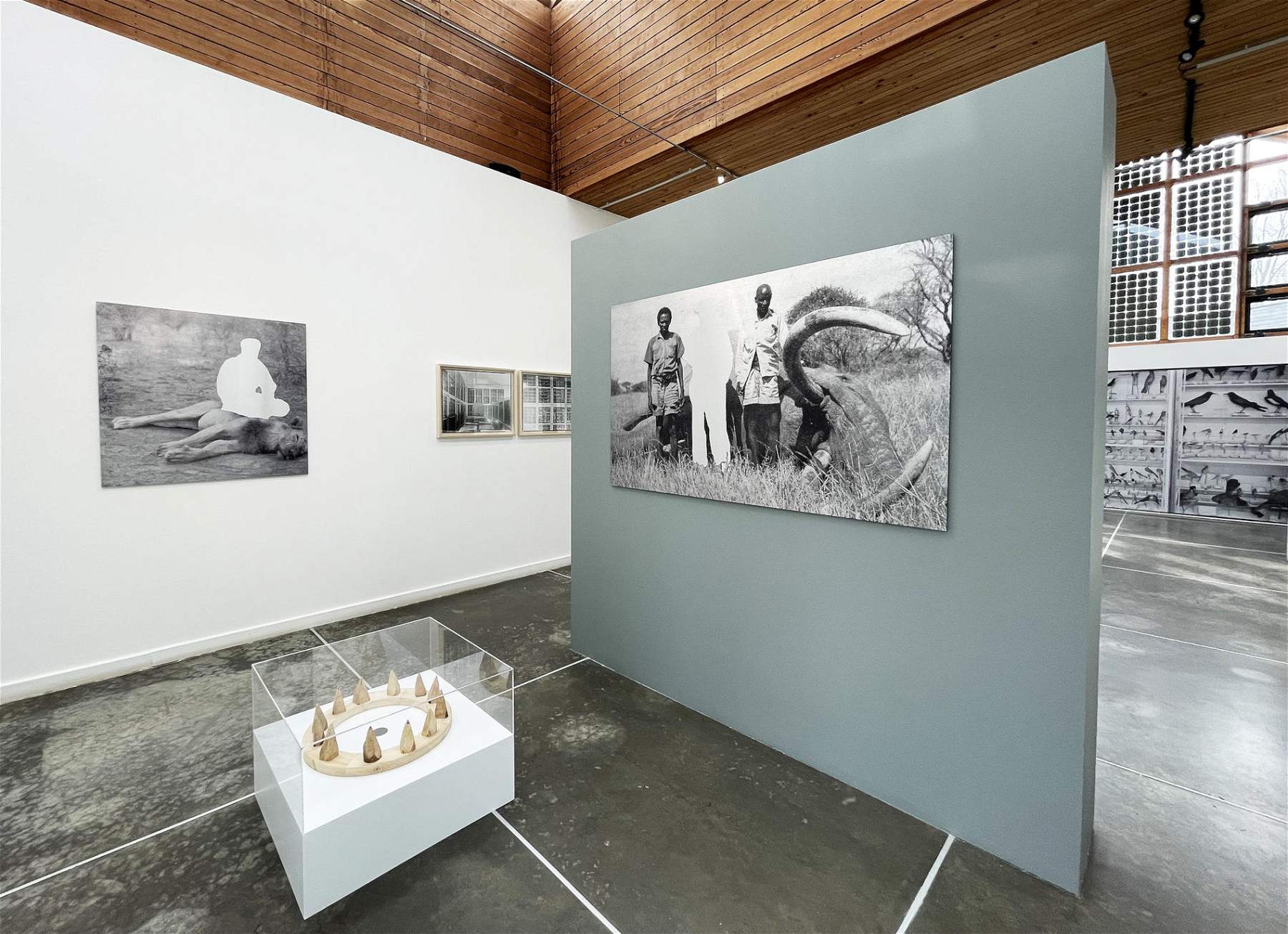What does it mean to be prey? Far from being an innate condition being prey is a positioning that is conferred in relation to other subjects in nature and in sociopolitical and international relations. This is what some young Italian artists want to represent with their works in the group exhibition La Natura e la Preda. Colonial Stories and Cartographies curated by Marco Scotini, which addresses the theme of colonial memory.
Irene Coppola with Vito Priolo, Edoardo Manzoni, Daniele Marzorati and Alessandra Messali point out that in order to trace a theory of prey, it is necessary to think both about the politics of representation and the ways in which power constructs social identities through repression. Compared to other conflict strategies, hunting is not a struggle between equals, but involves an original disequilibrium given by the material supremacy of the hunter. Confronting colonial memory today, Italian and otherwise, does not mean dealing only with a forgotten and removed past: the forms of oppression we thought we had left behind in the days of slavery or the plantation re-emerge in the neo-archaic reconfigurations driven by the power of neoliberal economic policies.
The exhibition presentation points out that Prey, which has the same etymology as the verb to take, is always something that is acquired through violence and capture and is an action that we have legitimized and attributed to nature. Constructing a theory of prey can be an important tool in addressing the dramatic topicality of colonial memory.The four emerging artists invited in the exhibition are not naturalists, but archaeologists of a social history of nature, investigating by working on representations of the exotic, hunting, and colonial experimentation with plants.
Edoardo Manzoni ’s hunting scenes, traps, and bird calls reflect on the aestheticization of the violence of images produced in Africa during the colonial period. The depiction of the tamed and killed “beast,” exaggerated in order to make the hunt a heroic feat, is functional to big game hunting as an exoticizing tool, a metaphor for the subjugation of populations.
Daniele Marzorati’s project, in turn, traces some of the physical traces of the colonial removed in the Italian territory, a photographic research that activates connections between the normative power of official history and seemingly neutral objects, looking at the link between fascism, colonialism and racism by making use of the concepts of “race” and “racialization” as expressed by Mellino, that is, the hierarchization through the ideology of “race” that invisibly lingers in the Italian social structure.
EMILIO SALGARI AND THE TIGER - A Story Written in Far Away Italy, Set in Guwahati 1870, by Alessandra Messali, is the result of research conducted by the artist between 2013 and 2016 in the Indian state of Assam as part of the Guwahati Research Program (Microclima). As is well known, the popular writer Emilio Salgari never traveled outside Italy, although he wrote more than 200 adventure stories set in “exotic” countries; among them, the city of Guwahati, a territory controlled by British colonialists. The project is an experiment in which the differences between text and context found in Salgari’s books are used as a tool to reflect on the logics of cultural representation and in particular on what it means to be represented.
Finally, Irene Coppola presents Habitat 08°N (a project supported by the Italian Council, Direzione Generale Creatività Contemporanea, MiC), created by working closely with the indigenous community of Guna Yala (Panama), in collaboration with architect Vito Priolo: starting from the local material culture, a memory code is constructed that can tell the history of the territory, date settlements, and map migrations and displacements.
During the period when the exhibition will be open to the public, upon reservation, PAV’s AEF Educational and Training Activities will offer schools and groups the workshop activity Wunderkammer d’Altrove, a collection of imaginative curiosities, poised between the real and the fake. Related to the research of The Nature and the Prey, the exercise of imagining what is far from us and, for that very reason, highly desirable, is investigated.
As part of the Workshops with Artists series, Alessandra Messali will lead the public workshop entitled Tiger vs. tiger in the jungle of representations on Saturday, May 14. Reservations are required to participate in the activities: 011 3182235 - lab@parcoartevivente.it
Nature and Prey inaugurates PAV’s exhibition program for 2022, which will continue with solo exhibitions by Elena Mazzi and Regina José Galindo. The exhibition is realized with the support of Compagnia di San Paolo, Fondazione CRT, the Piedmont Region and the City of Turin.
 |
| Turin, at the Living Art Park, colonial memory in a collective of young artists |
Warning: the translation into English of the original Italian article was created using automatic tools. We undertake to review all articles, but we do not guarantee the total absence of inaccuracies in the translation due to the program. You can find the original by clicking on the ITA button. If you find any mistake,please contact us.